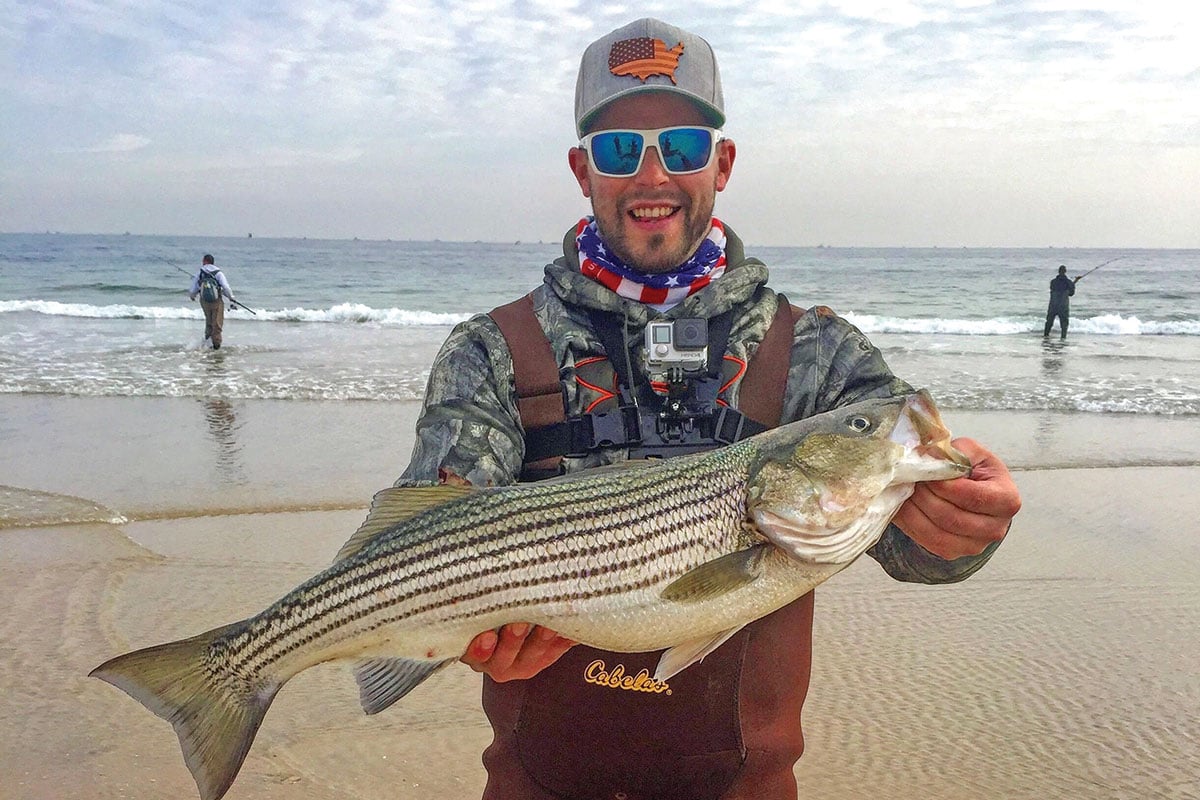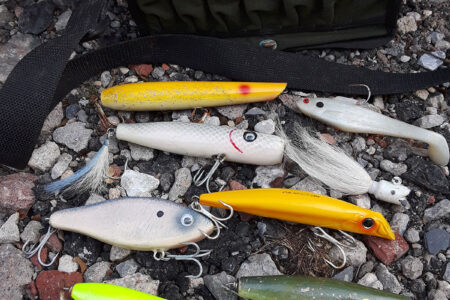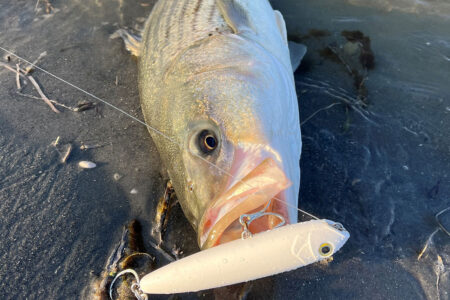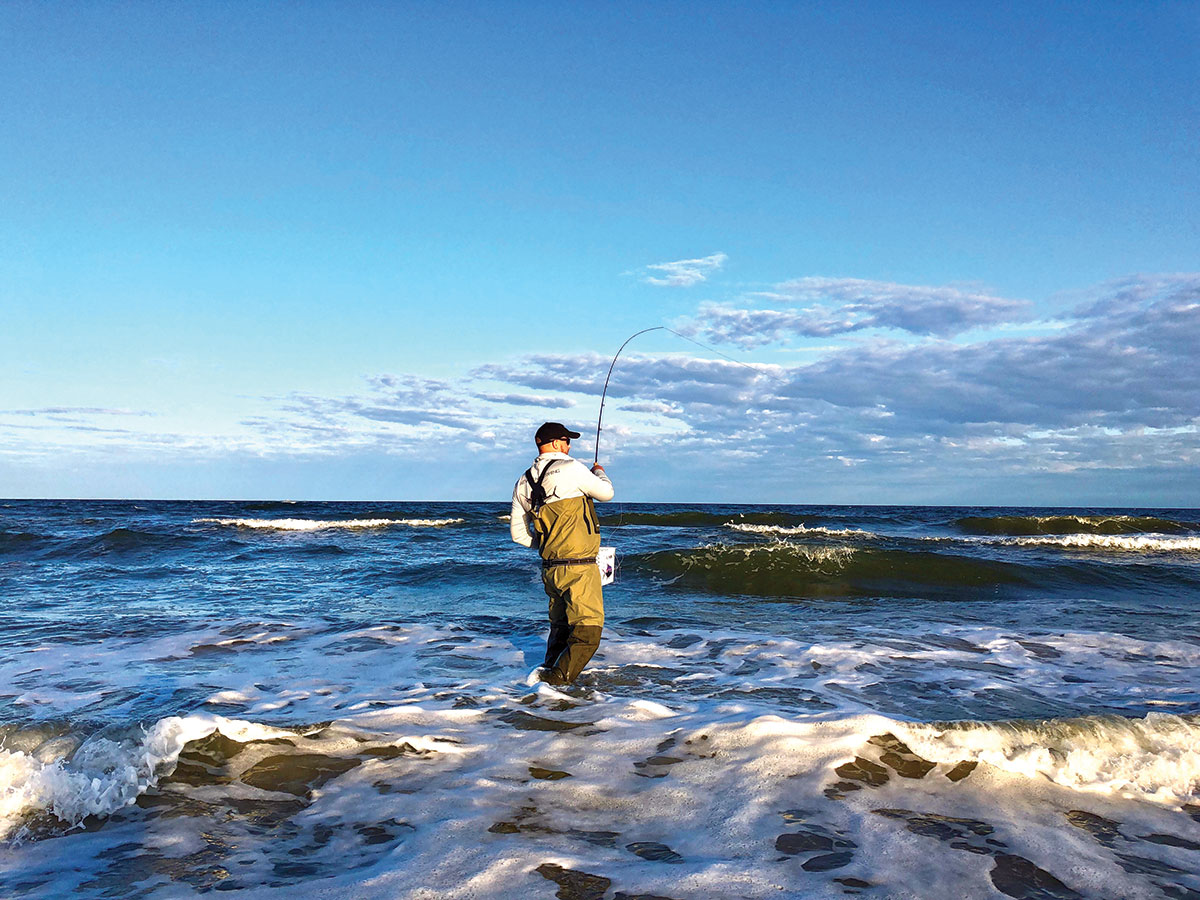
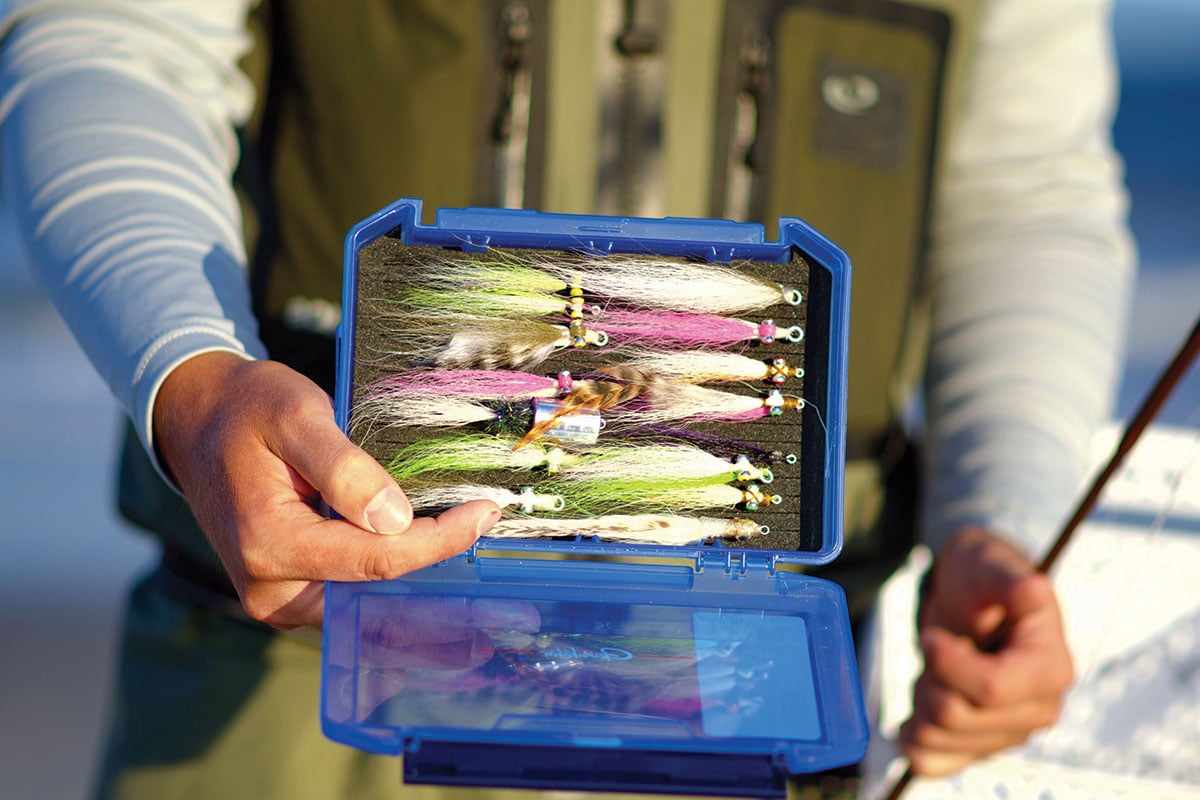
There’s nothing like getting up before dawn on a brisk October morning knowing you’re going to cross paths with some of our beloved striped friends making their way along their southerly migration. Whether you have a 4×4 vehicle beach access pass, or you are out on foot looking for those cuts in the water, there’s always a certain amount of hope and anxiousness with what your adventure might bring that day.
As the air temperature starts to drop, the water is soon to follow, although it seems like it’s not as drastic. With this, changes in bait patterns and the fish movement starts as striped bass begin their migration to follow that sweet spot in the water temperature. Or maybe it’s just their meals that they are following? Or both! Regardless, fall fishing is about to create a stir all along the eastern coastline, and it’s the perfect time to get out that 8-weight fly rod and reel and get on some schoolie stripers. They are pretty aggressive and a super fun fight with the right tackle. There seems to be plenty around compared to all other sizes of fish migrating with the season’s change.
I am almost always out on the water with a friend or one of my brothers so we’ll often discuss our game plan the night before, as we also do on our way to our spot or area of choice. One thing I can say has been super helpful to me is the ability to be versatile when following schooled stripers. They are always, always on the move. Therefore, you may not be quite as successful if thinking that you are going to spot X to spend a few hours waiting for the action to come to you. Be alert for signs of life; bait is the key. Sometimes birds feeding on bait is the simplest yet easiest way to get onto fish.
It’s important wherever possible that you be mobile. Move to another area if necessary. Carry a good (but not an overbearing) amount of gear that allows you to change game plans or change up what you originally had in mind showing up to the beach.
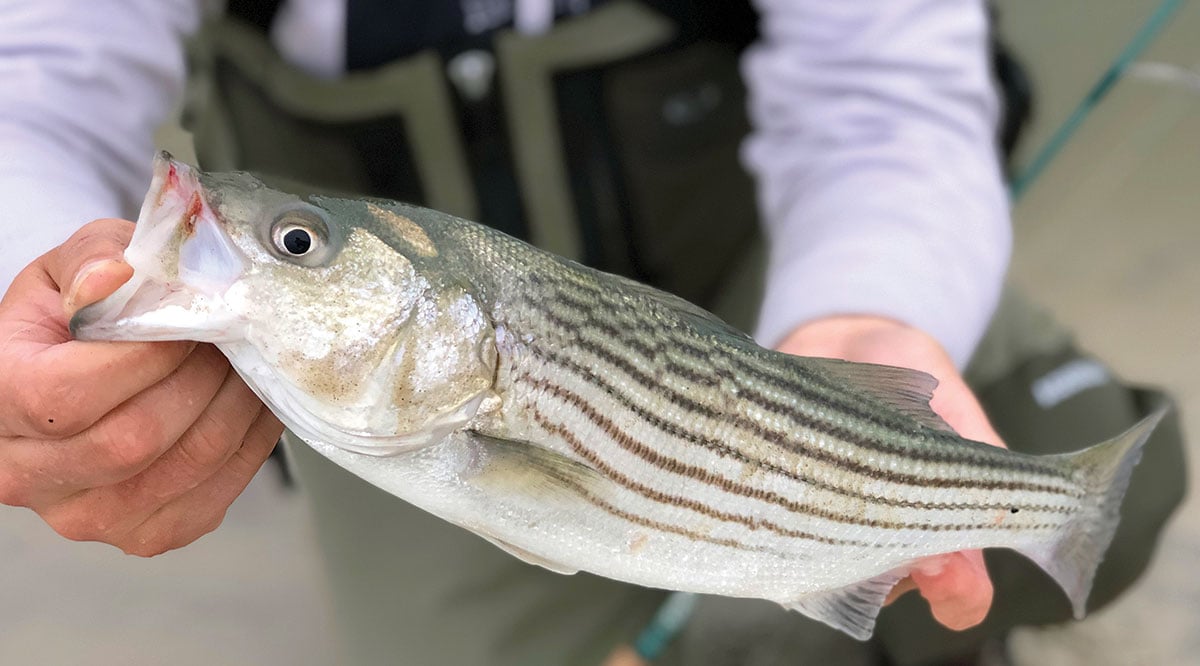
Location Scouting
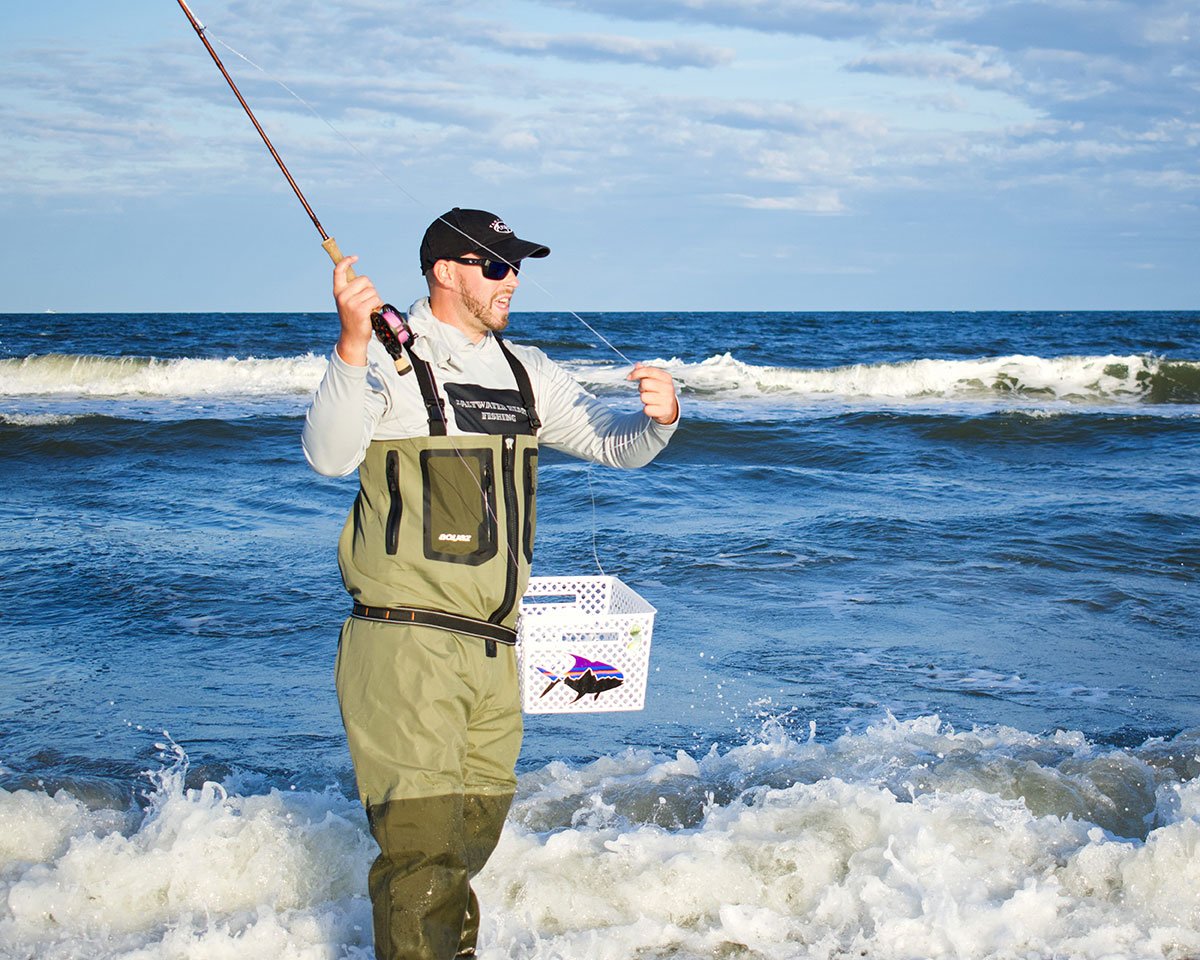
At dawn and at dusk, you may find some fish cruising the shallow water in just a few feet of water. But if you’re fishing after the sun is up a good bit then I’d recommend heading for some areas that would allow you to cast into deeper water. There are many spots you can reach that goal from where you are, standing in just a few feet of water. As an experienced surfcaster, you already know about troughs, cuts, and rips to use to your advantage; that’s where you’ll want to place your fly, in those deep areas where fish will be on the move. Think along the lines of a school of small baitfish; which way would they be moving with that current? A stronger current will be too much for any type of small baitfish to overpower so they’ll be sweeping with the current. If your fly is doing the same thing, it will get crushed by a bass waiting for it. Striped bass of course tend to be in areas they can ambush their meals.
Inlets or breachways are also great spots where you can cast into deep water while still on dry land. Fall is when small bait is being pushed back into the ocean because of the water temperatures dropping, so keep an eye out for migrating schools of bunker and finger mullet. These baitfish are on the move now, leaving local tributaries and bays for their yearly migration south along the Atlantic Coast; it stands to reason then that striped bass will be waiting at the inlet and mouths of the rivers.
Aside from open beaches, if you have the proper footwear, you can use jetties to your advantage. This is a great way to reach deeper water with nothing in the way of your backcast. Just be careful when maneuvering on rocks; Korkers and other similar footwear are a must, and it’s 100 percent a great idea to have a buddy along with you on any jetty trip, especially if this is new to you. A good practice is to time your casts to land just past a wave crashes so it doesn’t foul up your fly or fly line.
If you have put your time in for some fall schooled up stripers, you are bound to run into one of the most exciting events of the entire year, the fall blitz. It can last for three minutes where you get one or two shots at a fish, or it can last for an hour or more where you will have so many fish beached that you’re scrambling for your phone to document on video as to just how crazy it was. When this happens, it’s an all-out feeding frenzy where you can get them on topwater, mid column or down deep. Usually it’s a big bait ball of peanut bunker or some other small bait that gets them going, so anything similar of that size fly during a blitz will be plenty sufficient. In a blitz scenario, the fish tend to not be picky at all.
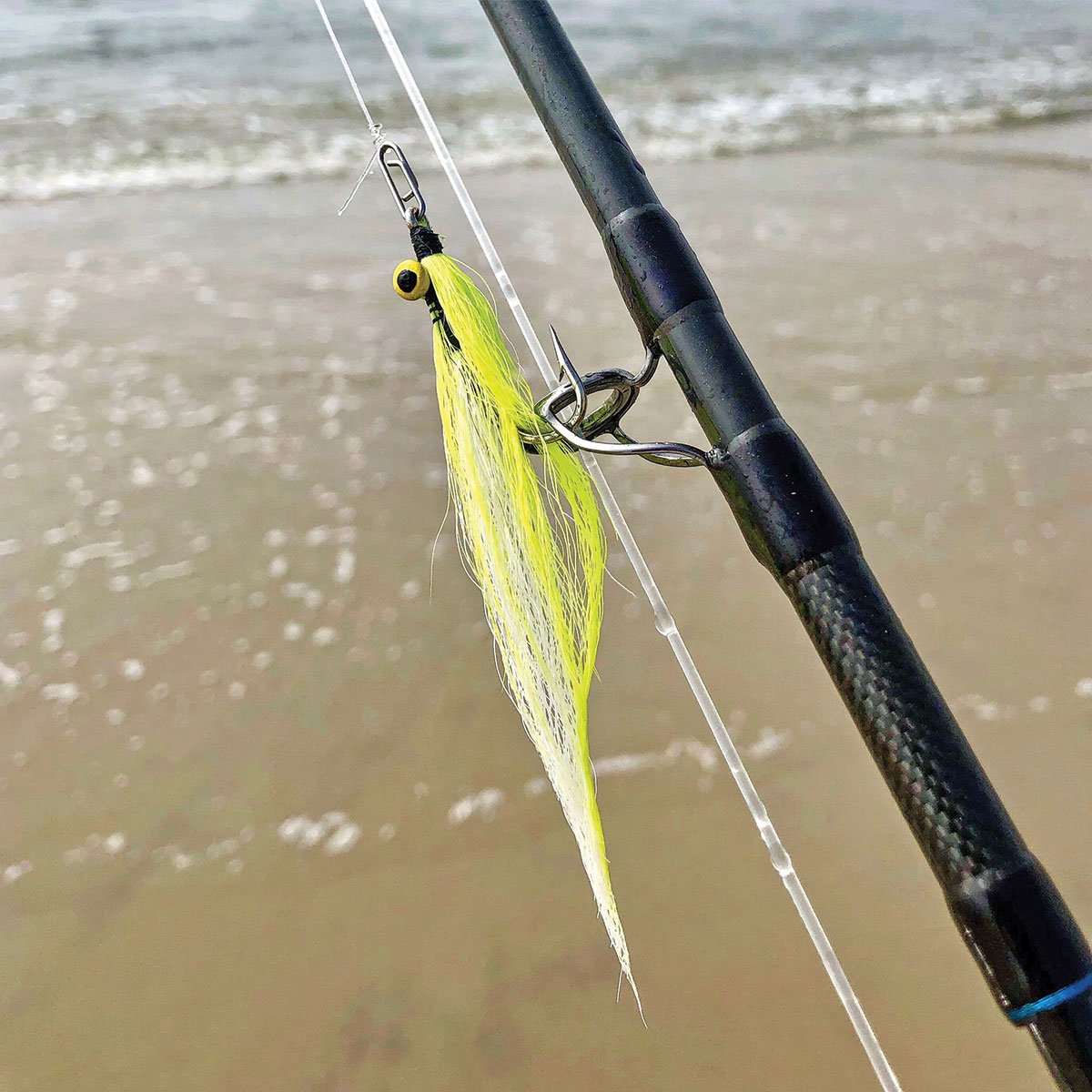
Then again, sometimes the blitz is just out of range and you have to wait for it to come a little closer. In terms of adding distance to your cast, I’d highly recommend taking a casting lesson or two if you plan to do a lot of surf flycasting. There are times when fly fishing the surf that extra distance will get you fish when they are just out of reach for others. If you are aiming to come across a blitz, the best times to find one are around dawn and dusk. The low light situations seem to increase chances all around, although it is still common to see them all throughout the day. Overcast days are even better and will also increase your chances as well.
As November and December roll around, the last of the schools of fish are pushing their way past for a last chance at them. Usually by this time it is mostly all smaller fish. This is when they are most likely keyed in on sand eels and herring. That could be helpful to know when trying to match what they are feeding on.
Gear Selection
My go to rod for this fall run is going to be an 8-weight rod. This will be a blast for aggressive smaller fish, yet can stand the test against bigger fish. My personal choice of rod is the Imperial Salt from St. Croix, a 9-footer with fast action that will give you plenty of casting distance if you need it. Of course, the obvious next step is matching up your 8-weight rod with a same sized reel. A good drag system is really what you want to look for as these fish, even smaller schoolie stripers, can take a good run away from you. My preference to go with my selected rod is one of the smoothest I’ve used, the TF-70 from 3-Tand Reels. It is super lightweight, yet will hold up to the task you need it to.
From the fly line perspective, the ideal situation here would be to have an option of swapping out a spool so you have the choice of using an intermediate line or a line with a fast sinking tip (to get down to deeper feeding fish quicker). This depends on your budget and whether you want to deal with carrying an extra spool should the opportunity present itself to change gears. If you’re choosing one line, I’d say go with the intermediate as your best overall option. You can still get down deeper with some flies due to having some weight to them. If it is windy, it is not a bad idea to switch to a heavier line to help cut through the wind.
There are two routes you can go when it comes to choosing your leaders for this way of targeting bass. The first is a tapered leader. You can start with 2 feet of 50-pound mono, then 2 feet of 40-pound, then another 2 feet of 30-pound. Your tippet then would be of 20- to 25-pound test. More often than not, I’m going to use the second option here, which is much simpler; that’s a straight shot of about 4 to 6 feet of 20- to 25-pound fluorocarbon or monofilament. If you are throwing a heavier fly, you may want to shorten your leader to help turn over the fly easier. A recent game changer added to my fly fishing arsenal is the new Tactical Anglers 25-pound Micro Power Clip. It is a huge time saver as well as a tippet saver. It literally takes a second to swap out flies without cutting and retying. It also does not hinder the action of the fly at all.
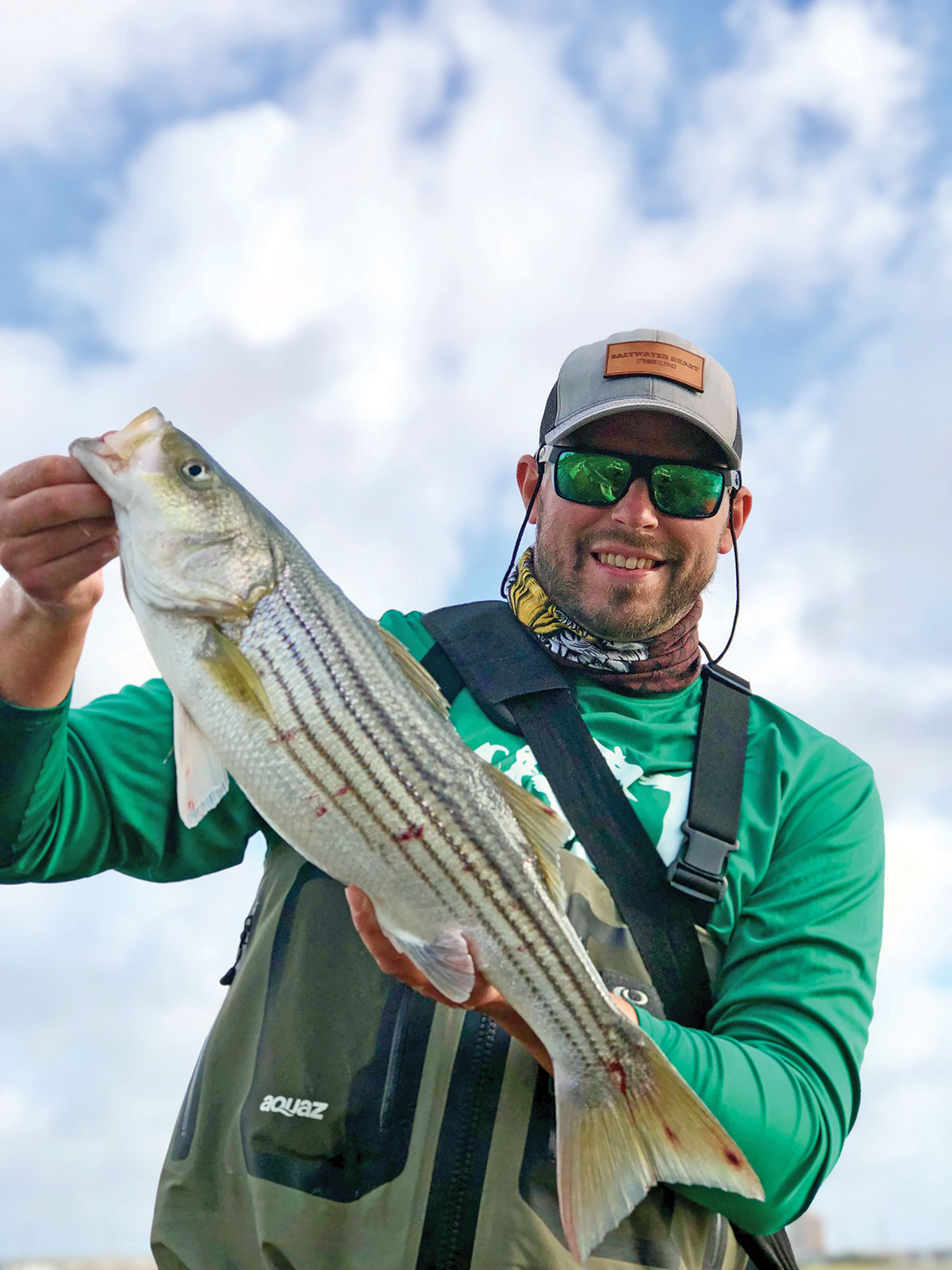
When it comes to fly selection, this is the time to simplify and think small in the fall. Don’t make it too complicated when choosing what flies to carry; just a handful of options is all you need. Colors usually depend on how clean the water is. Sometimes with dirty water I may choose a chartreuse or yellow fly, but almost always white is the first color out of my bag. The necessities are the Clouser Minnow, the Lefty’s Deceiver, and the combination of both of those, the Half and Half. I also wouldn’t leave home without something for topwater such as Bob’s Banger and a smaller fly for picky bass such as the Surf Candy. The Clouser Minnow is very versatile and the choice when you need to get deeper in the water column. The Deceiver can help you find feeding fish higher in the water column.
You can try switching up speeds of stripping, but more times than not, I’m going to use a slower speed of retrieval. Don’t forget to add in a few pauses, which allows the fly to drop and sometimes that is when it will get eaten. It is pretty cliché to say match the hatch, but that does matter when fish are not blitzing. Longer slender flies are the go to when sand eels are around, especially olive over white. A stripping basket is entirely up to preference and comfortability, but if you’re wading in knee to waist deep water, it is probably a good idea to use one. Otherwise, the line sitting on the water will affect your cast. In jetty situations it is also a good idea so your line doesn’t get hung up on sharp rocks. On a dry beach I don’t always carry one as it isn’t quite as necessary.
All in all, now’s your chance to have some fun without having to be out all night and into the wee hours of morning hunting down fish. Wait until just before dawn and head out. The birds will help show you to the fish. If they aren’t cooperating right away, it won’t be long until you spot schooled up bait; the bass should be “shore” to follow. And the rest is up to you.
